Abstract
Intravenous and footpad infections with Mycobacterium marinum and footpad infections with M. leprae were compared in the following mouse strains: A/He, BALB/C, CBA, C3H, C57BL, C57L, DBA, 101, and CFW. The results varied a great deal according to mouse strain used. Intravenous injection of high doses of M. marinum resulted in deaths after 28 days of 100% of strain A/He, and none of strain 101; 27 days after injection, the feet and noses of all strain CBA mice, but few of the C57BL, 101, or CFW mice, were involved. Injection of a small dose of M. marinum into the footpad produced visible disease in 5 days in all of the C57BL and 101 mice, but in not more than 60% of the A/He, DBA, and CFW mice; the average amount of swelling at 17 days varied from 4.40 mm in strain C57L to 0.92 in strain 101. After footpad injection of M. leprae, the average plateau harvests varied from 1.3 × 107 acid-fast bacteria in strain CBA to 6.5 × 105 in strain C57L. The infections in CBA mice extended from the site of inoculation throughout the foot. The temperature was measured rectally, in the footpad, and in the tail. Analysis of all the results revealed little correlation among the three types of infection. There was a strong negative correlation between the tail temperature and the death rate after intravenous injection of M. marinum, and a strong positive correlation between footpad temperature and plateau harvest of M. leprae.
Full text
PDF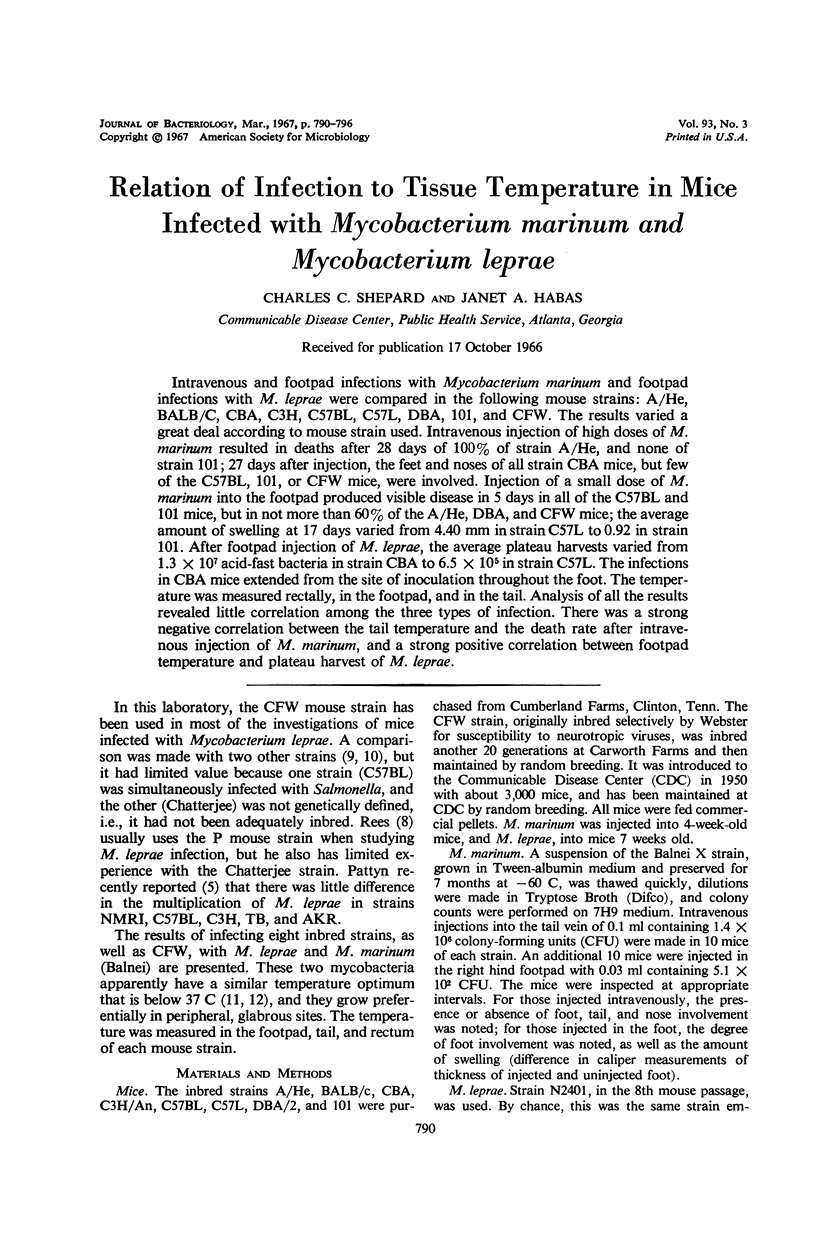
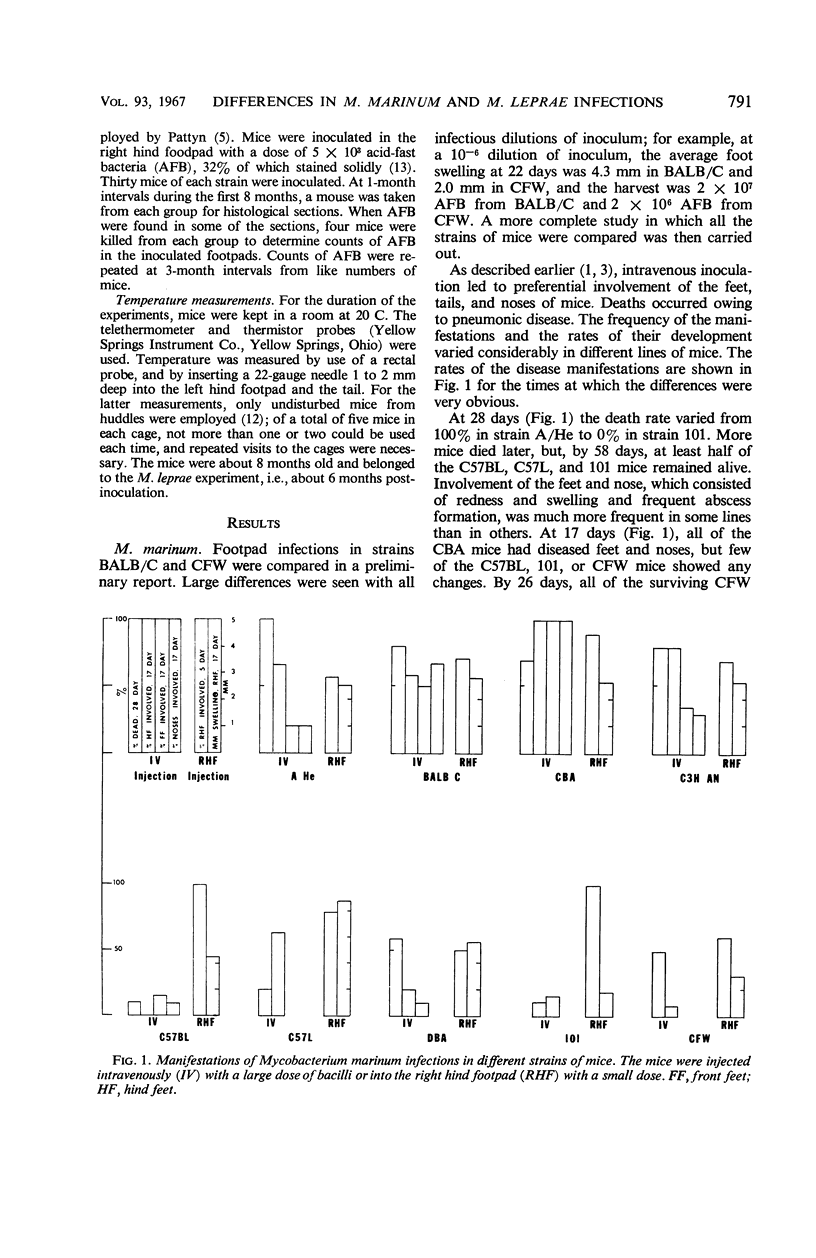
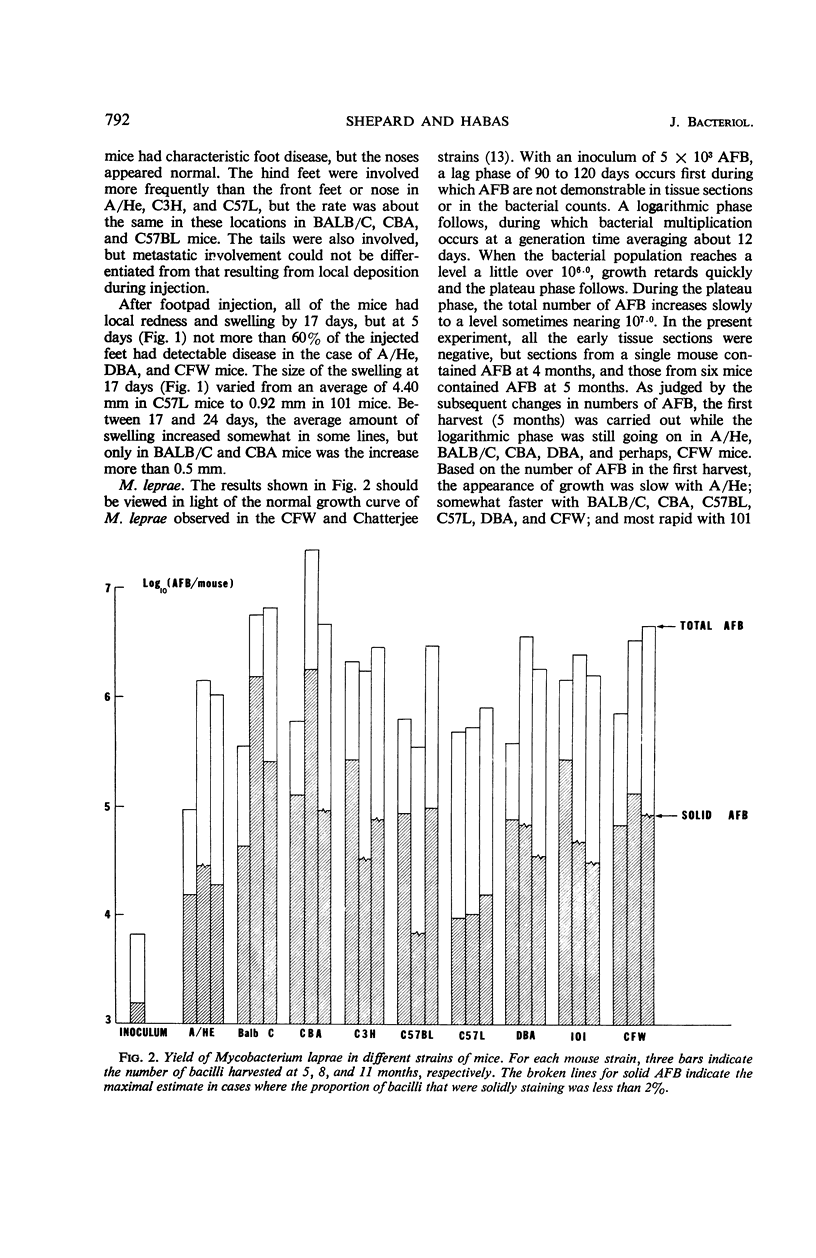
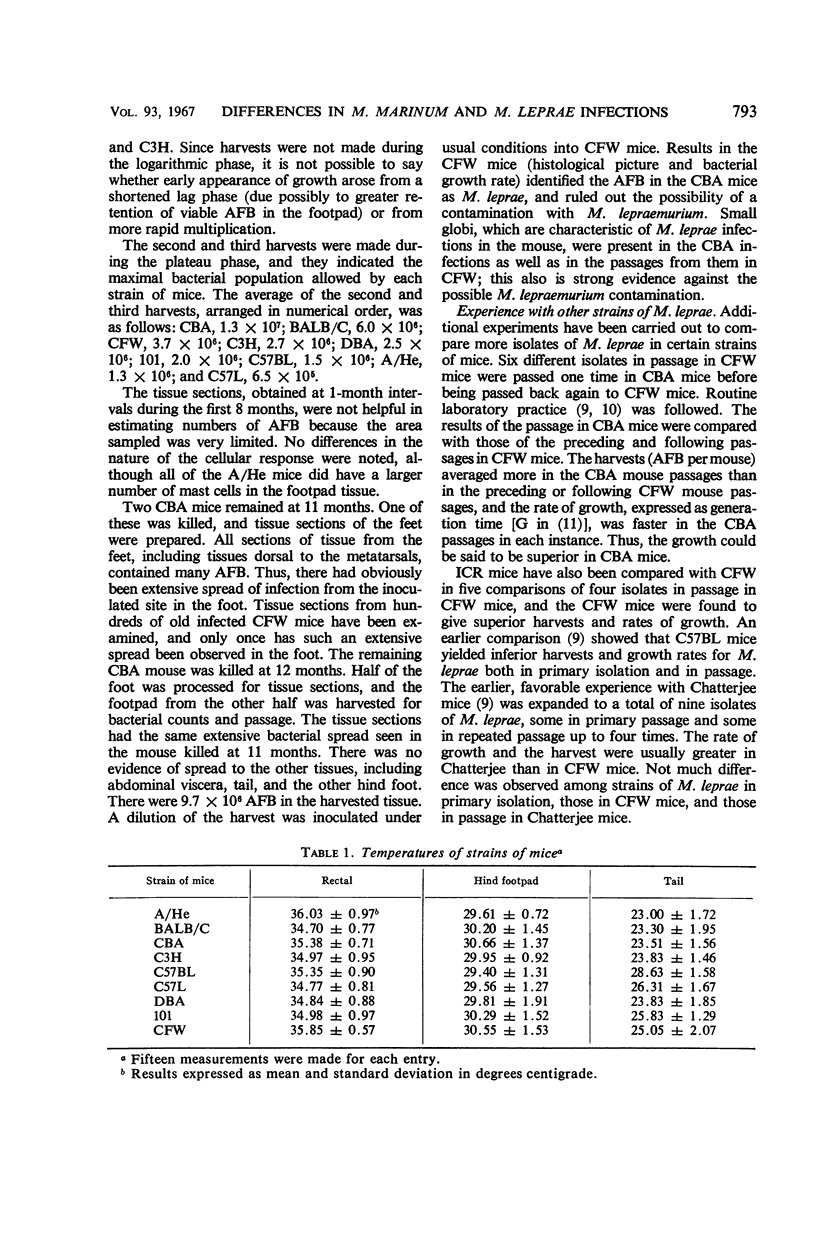
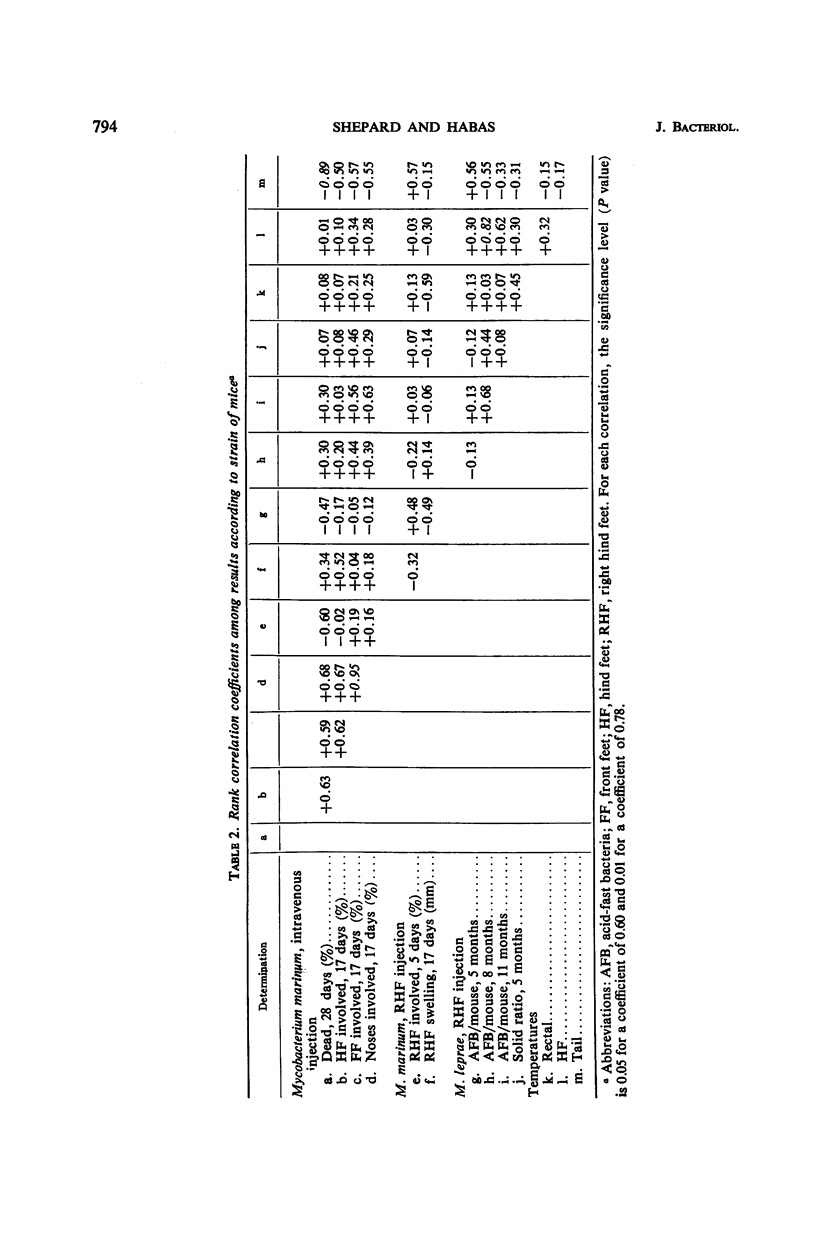
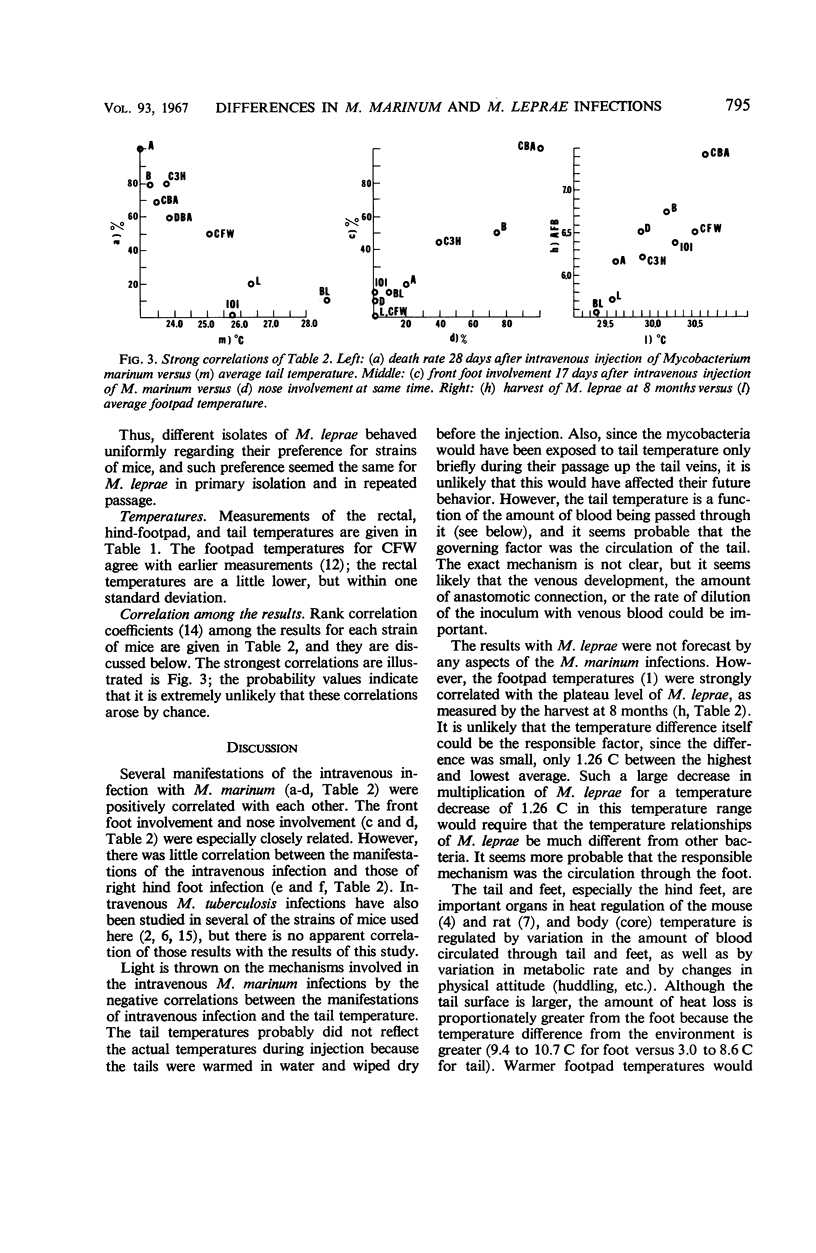
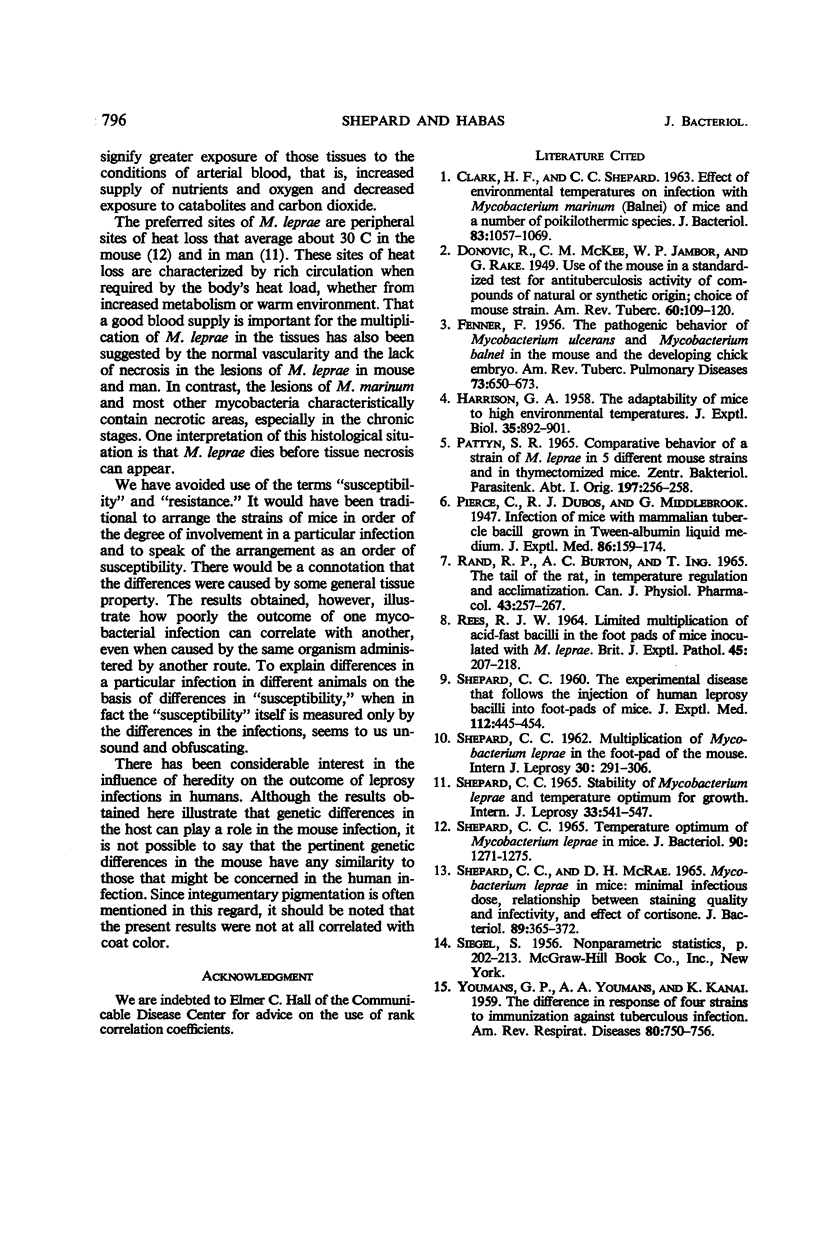
Selected References
These references are in PubMed. This may not be the complete list of references from this article.
- CLARK H. F., SHEPARD C. C. EFFECT OF ENVIRONMENTAL TEMPERATURES ON INFECTION WITH MYCOBACTERIUM MARINUM (BALNEI) OF MICE AND A NUMBER OF POIKILOTHERMIC SPECIES. J Bacteriol. 1963 Nov;86:1057–1069. doi: 10.1128/jb.86.5.1057-1069.1963. [DOI] [PMC free article] [PubMed] [Google Scholar]
- FENNER F. The pathogenic behavior of Mycobacterium ulcerans and Mycobacterium balnei in the mouse and the developing chick embryo. Am Rev Tuberc. 1956 May;73(5):650–673. doi: 10.1164/artpd.1956.73.5.650. [DOI] [PubMed] [Google Scholar]
- RAND R. P., BURTON A. C., ING T. THE TAIL OF THE RAT, IN TEMPERATURE REGULATION AND ACCLIMATIZATION. Can J Physiol Pharmacol. 1965 Mar;43:257–267. doi: 10.1139/y65-025. [DOI] [PubMed] [Google Scholar]
- REES R. J. LIMITED MULTIPLICATION OF ACID-FAST BACILLI IN THE FOOT-PADS OF MICE INOCULATED WITH MYCOBACTERIUM LEPRAE. Br J Exp Pathol. 1964 Apr;45:207–218. [PMC free article] [PubMed] [Google Scholar]
- SHEPARD C. C., MCRAE D. H. MYCOBACTERIUM LEPRAE IN MICE: MINIMAL INFECTIOUS DOSE, RELATIONSHIP BETWEEN STAINING QUALITY AND INFECTIVITY, AND EFFECT OF CORTISONE. J Bacteriol. 1965 Feb;89:365–372. doi: 10.1128/jb.89.2.365-372.1965. [DOI] [PMC free article] [PubMed] [Google Scholar]
- SHEPARD C. C. Multiplication of Mycobacterium leprae in the foot-pad of the mouse. Int J Lepr. 1962 Jul-Sep;30:291–306. [PubMed] [Google Scholar]
- Shepard C. C. Stability of Mycobacterium leprae and temperature optimum for growth. Int J Lepr. 1965 Jul-Sep;33(3 Suppl):541–550. [PubMed] [Google Scholar]
- Shepard C. C. Temperature optimum of Mycobacterium leprae in mice. J Bacteriol. 1965 Nov;90(5):1271–1275. doi: 10.1128/jb.90.5.1271-1275.1965. [DOI] [PMC free article] [PubMed] [Google Scholar]
- YOUMANS G. P., YOUMANS A. S., KANAI K. The difference in response of four strains of mice to immunization against tuberculous infection. Am Rev Respir Dis. 1959 Nov;80:753–756. doi: 10.1164/arrd.1959.80.5.753. [DOI] [PubMed] [Google Scholar]


